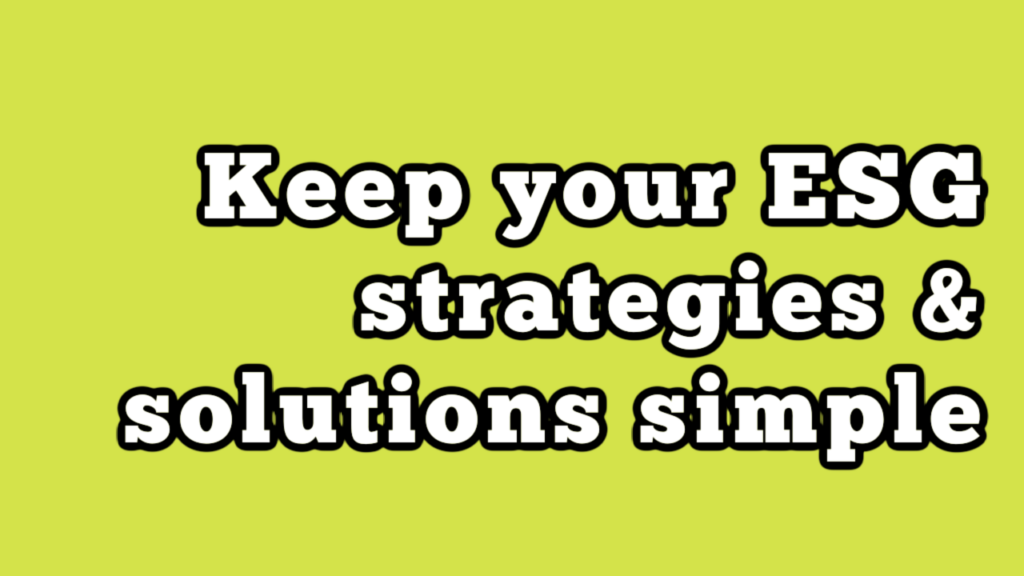Keep your ESG solutions & strategies simple

Here’s a note from Nawar Alsaadi:
According to a survey by Moore intelligence of 1800 businesses in 12 countries, it was estimated that mid-sized to larger businesses that place greater emphasis on sustainability have seen their revenues increase by $3.1 trillion over the past four years. On average, businesses placing greater emphasis on sustainability over the last four years have seen revenues increase by 10% over the same period – more than twice the rate of less committed businesses.
If you are an ESG solutions vendor, the above sounds very encouraging, and you would be right to incorporate such findings into your marketing and communications. However, despite the above, these findings will do little to increase your ESG solution sales. All the above does is trigger a business executive curiosity. It’s your job to convert that curiosity into a purchase, and the gap between the former and latter is as wide as the distance between the moon and the sun.
In the vast majority of cases, companies, and by extension, their executives, have the following objective: increase revenues and market share profitably without causing harm to planet and society. At the most elementary level, achieving this requires:
1) A process to identify and profitability capture business opportunities,
2) A process to manage risk,
3) A mechanism to maximize the utilization of available resources.This is what is commonly known as corporate and/or business strategy.
Your ESG solution needs to meet at least one of the above three requirements without violating the other two. As such, ESG solutions that increase revenues, but can’t do so at a lower cost than the alternative wont make the cut. ESG solutions that reduce risk at a higher cost than the perceived risk wont make the cut. ESG solutions that take away from an employee core focus in service of a secondary objective wont make the cut.
This latter point is very prevalent within ESG providers. In a recent conversation with a carbon accounting firm, I was informed that it takes 2-days of work for an on boarded employee to input all the data required. Keeping in mind that an average employee at a large company generates over $230K in revenues per year. This is an average of $900 per working day. Consequently, if 50 people at a large company need to interact with this carbon software, the added cost to the company is $90K in lost revenues. This is on top of the solution cost. If 500 need to interact with the solution, this is close to $1M in lost sales.
I can safely state that 9/10 out ESG solutions demoed to me are either complex or very complex. The fact that you are building ESG solutions for complex sustainability issues doesn’t give you permission to build a digital labyrinth. Always remember what software designer Grady Booch said, “the function of good software is to make the complex appear to be simple”. Many ESG companies are yet to make this discovery.
